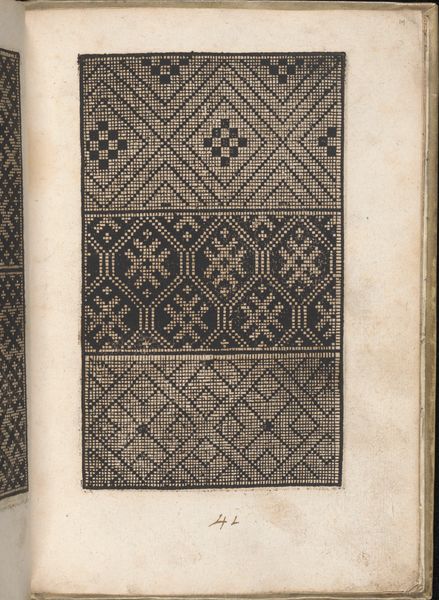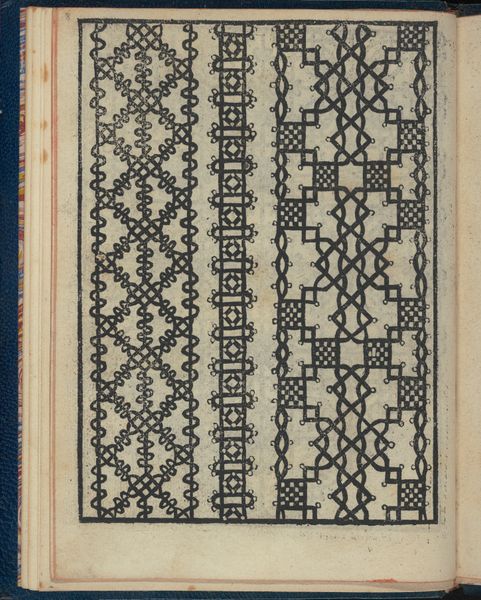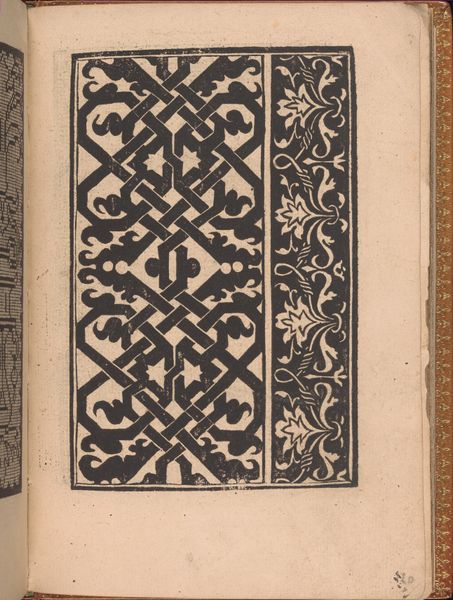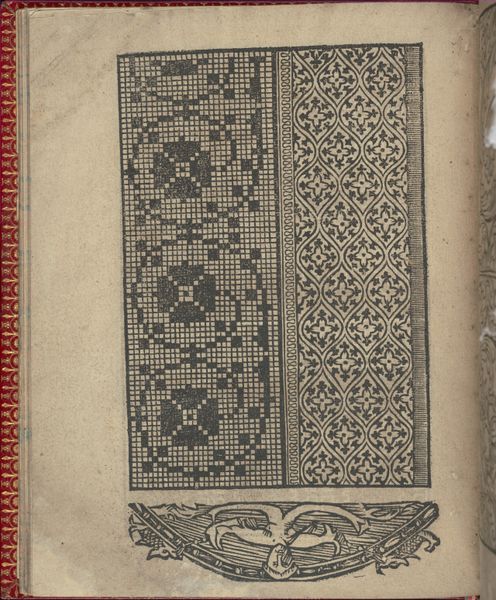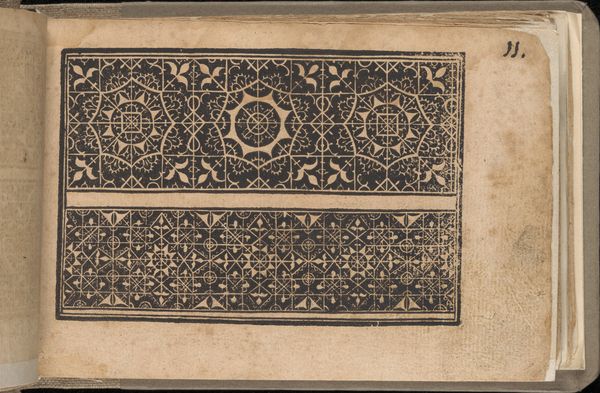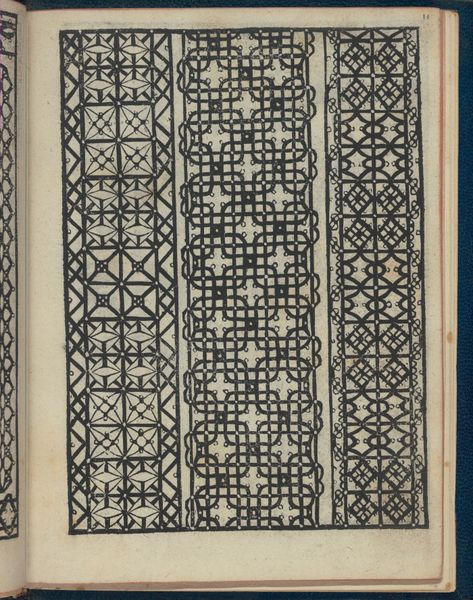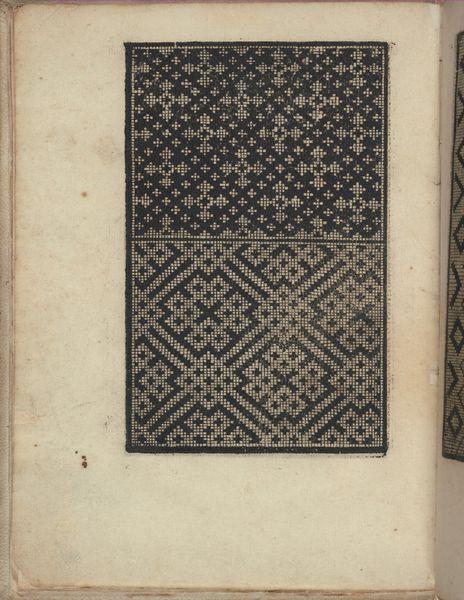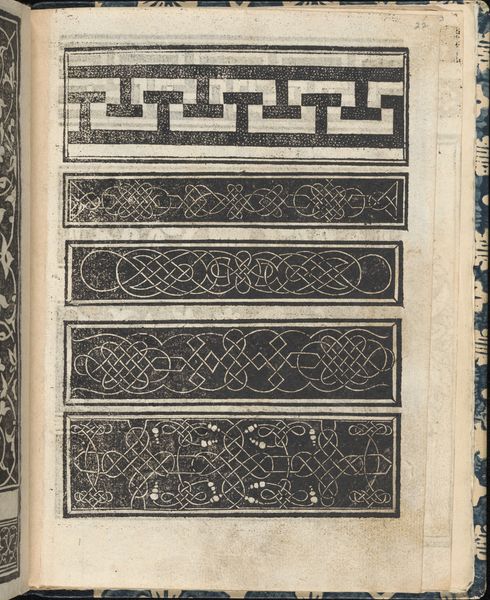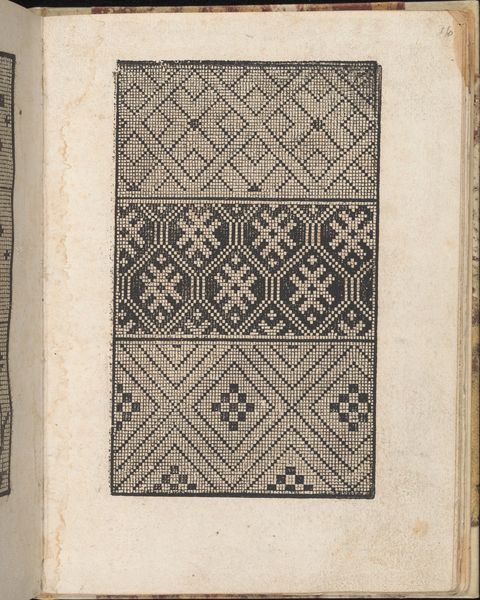
Le Pompe: Opera Nova, page 7 (recto) 1557
0:00
0:00
drawing, graphic-art, ornament, print, intaglio, woodcut
#
drawing
#
graphic-art
#
ornament
# print
#
book
#
intaglio
#
11_renaissance
#
woodcut
Dimensions: Overall: 8 1/16 x 5 7/8 in. (20.5 x 15 cm)
Copyright: Public Domain
Curator: This page is from "Le Pompe: Opera Nova," a book of lace patterns printed in Venice in 1557. It comes to us from the Renaissance, that rebirth of creativity and exploration. The publishers are listed as Giovanni Battista and Marchio Sessa. Editor: Whoa, dizzying. I’m immediately lost in the black lines against the creamy paper. Like staring into a spider web, or maybe one of those impossible M.C. Escher drawings, but for textiles. I wonder what it would be like to stitch this by hand? Curator: These weren't meant as mere doodles, but as working patterns. Imagine women of the time carefully translating these prints into exquisite needle lace. Lace held a significance beyond mere decoration; it was a symbol of status and skill, demonstrating a woman’s artistry. Editor: There's a real tension between the precision needed to create this and the freedom implied in its creation. These are essentially algorithms expressed through thread. How wild to think of such ornate patterns coming out of a mathematical place! Almost futuristic, really. Curator: Consider, too, the social aspect. Lace-making was often a communal activity. Women gathered, sharing skills, stories, perhaps even subversive ideas, within the seemingly safe space of domestic craft. Editor: The level of concentration needed feels almost meditative, though. Were these designs meant to provide structure and discipline, or offer opportunities for play? I feel like that combination would be what I need right now. Curator: Absolutely, and beyond personal expression, "Le Pompe" represents the rise of print culture. This allowed for the standardization and dissemination of design across Europe, influencing fashion and the decorative arts. Editor: To think this intricate, almost alien design was cutting-edge back then! Looking at this reminds me that history and beauty exist in these tiny details. Thanks to these prints, and the creativity of the women who put thread to cloth. We now have a beautiful glimpse of their vision.
Comments
No comments
Be the first to comment and join the conversation on the ultimate creative platform.

